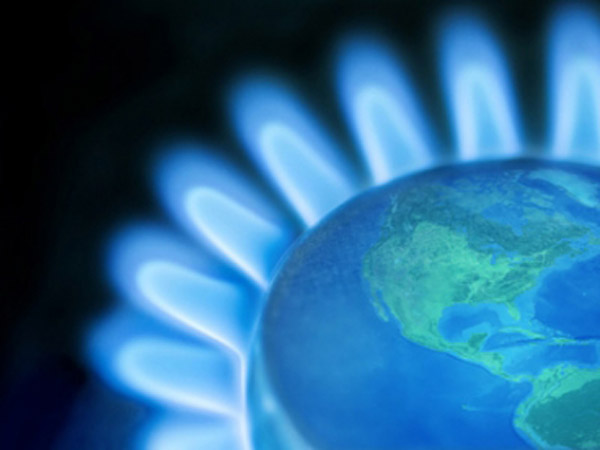How much and why the demand for gas will grow in the world

The International Energy Agency predicts a rebound in gas demand in 2021 and then steady growth through 2024. Meanwhile, prices are skyrocketing. Here are numbers and scenarios
According to the International Energy Agency (IEA), the global recovery in gas demand between now and 2024 threatens the achievement of the targets for net zero greenhouse gas emissions by 2050.
THE CLIMATE OBJECTIVES OF THE PARIS AGREEMENT
More than 190 countries have signed up to the 2015 Paris climate agreement, which aims to limit global warming to within 1.5 degrees Celsius: a goal that, in order to be achieved, implies a strong reduction in the use of fossil fuels. , such as coal, oil and even gas (although the latter is the least polluting of the three).
WHAT THE IEA WRITES
In its latest outlook – a report outlining the prospects for energy markets – published today, the IEA states that demand for natural gas in 2021 will "rebound strongly" in 2021, after the lows reached last year. due to the coronavirus pandemic, which has brought down consumption. After the rebound, gas demand "will continue to increase if governments do not implement sound policies to get the world on a path to net zero emissions by mid-century."
HOW MUCH WILL THE GAS DEMAND GROW …
In 2021, the demand for gas is expected to grow by 3.6 percent compared to 2020. From 2022 to 2024, the IEA expects a slowdown: that is, it will rise at an average annual rate of 1.7 percent.
At such a pace, gas demand will be too high and the IEA's roadmap for net zero emissions by 2050 – the so-called “carbon neutrality” – will be unachievable.
…AND WHY
The IEA explains that the growth in demand for natural gas is due both to the resumption of economic activity after restrictions to limit coronavirus infections, and to the replacement of coal and oil capacities. Natural gas, in fact, is a fossil fuel and therefore polluting, but it is “cleaner” – in terms of emissions released – than coal and crude oil.
Gas is often described as a "transition" fuel from fossil to renewable sources, because it allows for easy replacement – and savings in emissions – of the coal and crude oil used to generate electricity.
Gas can also "support" intermittent renewable sources, guaranteeing – at least until even better storage devices are developed – the stability of the grid through reserve energy, to be used in the event that wind and solar plants do not offer sufficient output (due to lack of sun and wind, for example).
THE IEA RECOMMENDATIONS FOR THE "NET ZERO"
Last May, the IEA had defined a series of guidelines for the energy sector to help achieve carbon neutrality, calling on – among other things – investors to stop financing new projects on coal, oil and gas.
The agency's latest report argues that new gas demand could be met by projects already approved or under development before the outbreak of the pandemic.
THE INCREASE IN THE PRICE OF GAS
In June, gas prices around the world reached levels not seen in years. The surge is due both to the increased demand for energy for cooling in the northern hemisphere, given the summer; and the accumulation of gas stocks in Asia in anticipation of the winter: the latter was particularly rigid and some countries, such as Japan, had found it difficult to meet the demand for heating.
The IEA outlook states that in Europe, in 2021, the average prices of Dutch gas – used as a benchmark , or regional reference point – will reach $ 9.5 per one million Btu: this is the highest since 2013. In Asia, on the other hand, the prices of liquefied natural gas (LNG) on the spot market will reach 11 dollars per million Btu: never higher since 2014.
BILLS INCREASE IN ITALY
The rise in international gas prices is having an effect on the cost of bills, also in Italy: from July to September , electricity and gas bills will increase by 9.9 and 15.3 percent , respectively. The rise in prices would have been even higher without government intervention.
According to the president of Arera (Regulatory Authority for Energy, Networks and the Environment), Stefano Besseghini , "as long as their values [of gas and the price of CO2, ed. ] Remain at their maximum, it will be difficult for there to be an inversion of trend"
WHAT WILL HAPPEN IN EUROPE
Gas prices in Europe have risen nearly 90 percent this year, according to Bloomberg .
There is a problem with stocks, meanwhile, which are at low levels: it has to do with the fact that last winter was colder than usual and there was a great demand for energy for heating. Inventory levels in July have been at their lowest in over a decade.
There is also a supply problem, which is not enough. Russia is not sending substantial volumes of natural gas to Europe via Ukraine. And the Asian countries – as we have seen – are buying (and removing from the market) many sea freight of LNG.
The situation could be aggravated by the closure of two gas pipelines in the coming days: the transit in Nord Stream 1 between Russia and Germany will be interrupted for ten days due to maintenance works; The Yamal-Europe pipeline (from Russian Siberia to Germany) will also be out of order, from 6 to 10 July.
This is a machine translation from Italian language of a post published on Start Magazine at the URL https://www.startmag.it/energia/aumento-domanda-gas/ on Mon, 05 Jul 2021 10:16:36 +0000.
